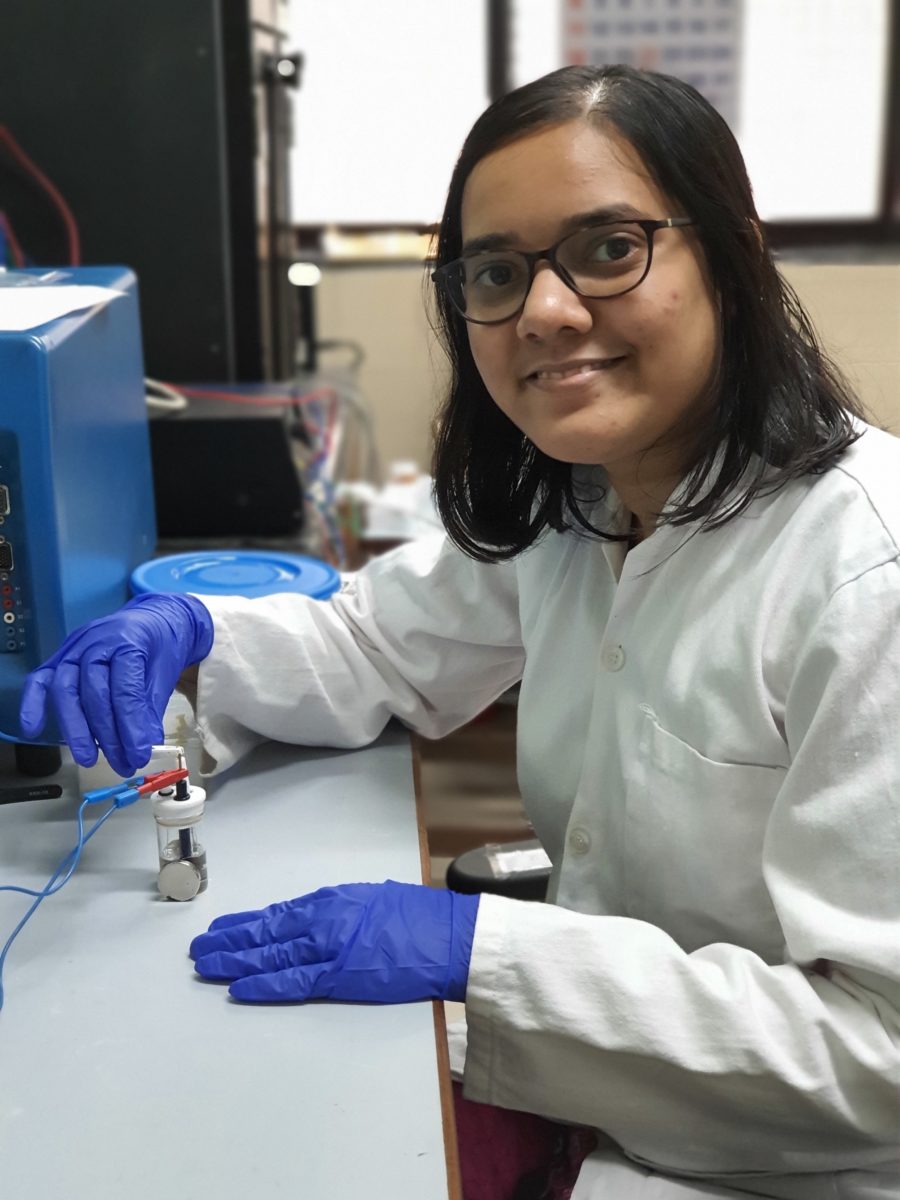Researchers at the Indian Institute of Technology Bombay (IIT Bombay) have devised a method that increases hydrogen production up to three times while significantly lowering the energy required for water electrolysis. The research team, led by Prof. C. Subramaniam, demonstrated that a water electrolysis system that produced 1 ml of hydrogen gas, required 19% lower energy to produce 3 ml of hydrogen in the same time when electrolysis was done in the presence of an external magnetic field. The team achieved this by synergistically coupling the electric and magnetic fields at the catalytic site.
Manipulating heterogeneous electrified interfaces with an external magnetic field (Hext) explicitly mandates the constant presence of Hext for achieving magnetoelectrocatalytic kinetic enhancements. The researchers demonstrated the highest kinetic enhancement of 650% in electrocatalytic hydrogen evolution reaction (HER), without the mandatory presence of Hext.
The key to this effect is the electrocatalytic (carbon-cobalt oxide catalyst) interface that does not require the constant presence of any external magnetic field and can sustain the magnetization for prolonged time periods. The cobalt-oxide-based catalyst developed by the researchers also provides a cost advantage over platinum (Pt)-based catalysts.
Speaking to pv magazine, Prof. C. Subramaniam said, “There are numerous attempts to fabricate the best electrocatalyst for water splitting at the low material cost, low energy penalty without compromising on the rate of hydrogen generation. Pt-group-based catalysts are the best known in this direction. However, the prohibitive cost of the catalyst is a huge challenge for commercialization. This led to developing earth-abundant cobalt oxide as catalysts. The cobalt-oxide (Co3O4) nanocubes were dispersed on nanostructured carbon florets as supports to make the final catalyst.”
“Given the kinetics of water splitting is slow with these catalysts, we developed an innovative solution of coupling an external magnetic field to the electrolytic process.”
With this approach, the researchers were able to obtain a 650% increase in current density, 19% lowering of energy required, and a three-fold increase in volumetric hydrogen production rate.
The magnitude of the enhancements achieved is unparalleled. And the intermittent magnetic field required is similar to what a fridge magnet can provide.
“This route can be directly adopted in existing electrolyzers without any change in design or mode of operation and one-time exposure of magnetic field for 10 minutes is enough to achieve the high rate of hydrogen production for over 45 minutes,” according to the researchers.
“The intermittent use of an external magnetic field provides a new direction for achieving energy-efficient hydrogen generation. Other catalysts can also be explored for this purpose,” said Prof. Subramaniam. “A basic electrolyzer cell of 0.5 nm3/h capacity can be immediately upgraded to a 1.5 nm3/h capacity by replacing the catalysts and supplying the magnetic field,” added Jayeeta Saha and Ranadeb Ball, project researchers and students at IIT Bombay.
Having shown that the method is not very complicated either, the team is now working with an industrial partner to ensure its successful commercialization.
The research findings are published in Sustainable Chem. Eng Journal of American Chemical Society, 2021.
This content is protected by copyright and may not be reused. If you want to cooperate with us and would like to reuse some of our content, please contact: editors@pv-magazine.com.









1 comment
By submitting this form you agree to pv magazine using your data for the purposes of publishing your comment.
Your personal data will only be disclosed or otherwise transmitted to third parties for the purposes of spam filtering or if this is necessary for technical maintenance of the website. Any other transfer to third parties will not take place unless this is justified on the basis of applicable data protection regulations or if pv magazine is legally obliged to do so.
You may revoke this consent at any time with effect for the future, in which case your personal data will be deleted immediately. Otherwise, your data will be deleted if pv magazine has processed your request or the purpose of data storage is fulfilled.
Further information on data privacy can be found in our Data Protection Policy.